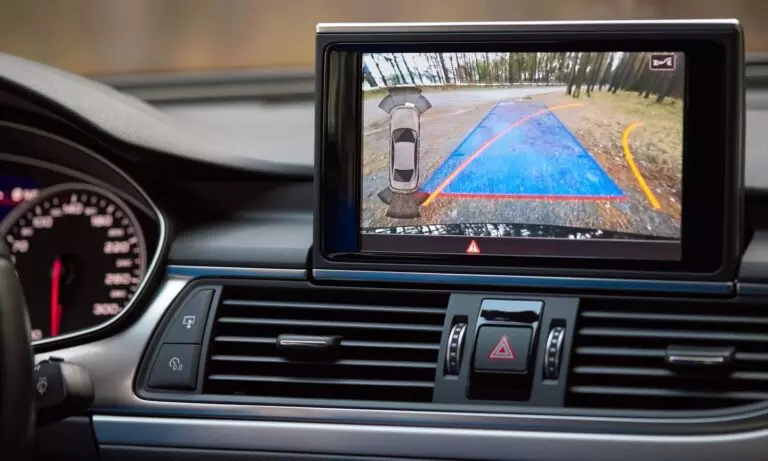For a long trip, I borrowed a friend’s 25-year old BMW. I was always disappointed that I didn’t have a backup camera for the rear when I turned it in reverse.
But that’s not all. I wish I had adaptive cruise control for long, open roads that are more relaxing. I also wish I had blind-spot warning to assist me in changing lanes on busy highways.
However, not all drivers agree. Friends and others who drive have told me that they simply turn off these features to avoid the annoying flashing lights and beeps.
Kathleen Rizk is senior director of user experience benchmarking for J.D. Technology. She says, “All these warnings are too many for people because there are so many false positives.” Power, a consumer research firm. She adds that while these features can be safe, they are still important and people must learn how to use them. ”
According to a 2021 study by MIT’s Advanced Vehicle Technology Consortium, and Partners for Automated Vehicle Education (or PAVE), car owners trust these automated driving features at different levels. Rizk states that low-speed features such as rear backup cameras were very popular. Others were more difficult to understand and less trustworthy because they were activated at slower speeds.
This could be because different manufacturers have different names for these features. It’s possible that their alerts can be overwhelming if they don’t make sense.
These beeps are helpful.
1. Safely back up
A rear backup camera is vital to ensure that there aren’t any obstacles below the rear tailgate, with so many SUVs and trucks of high clearance. It could be your child playing in your driveway, tragically. Since 2018, all new cars sold in the United States must have rear backup cameras.
There are many other features that can help you back up safely.
Cross-traffic alert. Rizk loves this feature and so is most drivers who use it. Radar sensors will warn you if you are being approached by a vehicle if you move out of your parking spot. The vehicle’s monitor will sometimes show the direction and beeps of the approaching vehicle. Cross-traffic alert can also be used to warn you about pedestrians or bicyclists depending on the vehicle.
360-degree camera. This feature uses multiple cameras to show you a top-down perspective of your car and the surrounding area. This feature is great for parallel parking or maneuvering in tight spaces.
Rizk states that camera-based features have become very popular. Many new uses for them are being created, including built-in cameras to record driving and monitor your car’s security.
2. Help you change lanes safely
Radar sensors detect vehicles in your blind spot and alert you when they are. A warning light is placed on your side mirrors to alert you when a vehicle is approaching. You’ll hear an audible sound when you turn on your turn signal and there is a car in your blind spot.
Rizk says that this feature doesn’t replace looking for a lane open. This is a support system that alerts you to smaller vehicles and those approaching from the adjacent lane.
Two other features are similar:
Lane keeping assistance/warning. This feature nudges your steering wheel to keep the vehicle in its lane if you go beyond the road’s lines. A beep can also alert you to stay in your lane. According to the Advanced Vehicle Technology Consortium study, 70% of respondents did not realize that these systems are activated only when speeds exceed 30-45 mph.
Rear-facing camera. This shows you the road in front of you. This can be useful if your car is full and the view out of the rear window is blocked.
3. Avoid rear-end collisions
An automatic emergency brake system is designed to keep you safe from being rear-ended by a car in front.
Radar sensors continuously monitor how much space you have ahead. It will warn you if the distance suddenly drops and you don’t apply the brakes. Some systems will then apply the brakes.
Although this is an important feature, it can cause confusion for drivers by giving false positives as Rizk has mentioned. This feature works in conjunction with emergency brake systems:
Adaptive cruise control. This function is very similar to cruise control but maintains a certain distance between you, and the car in front. Your car will adjust its speed if the car in front slows down or stops. This feature is especially useful for reducing driver fatigue during long trips.
What your car is telling
According to the Advanced Vehicle Technology Consortium survey, only 51 percent of car owners are interested in automatic driving technology. Only 29% of respondents actually sought such information.
Rizk states that it is definitely worth taking the time to learn these systems.
Learn more about your car’s features here
-
Look at your window sticker to see which features you have.
-
Watch videos on the manufacturer’s site to learn more about the system.
-
You can either read the manual that came with your car or the online version. It might be easier to find the
-
Play around with the various features in a safe environment until you get a feel for how they work.
-
YouTube is a great resource. YouTube is a great place to find videos from car enthusiasts explaining the functions of certain features.
